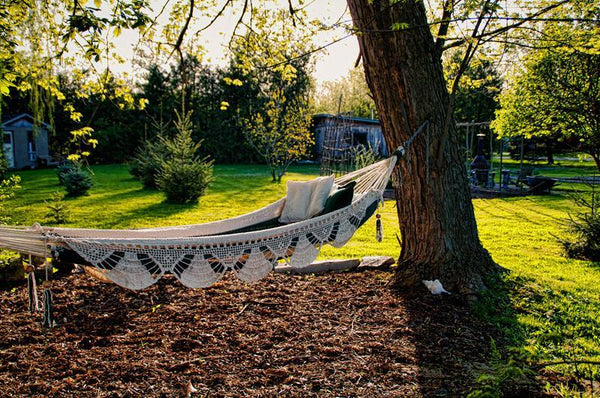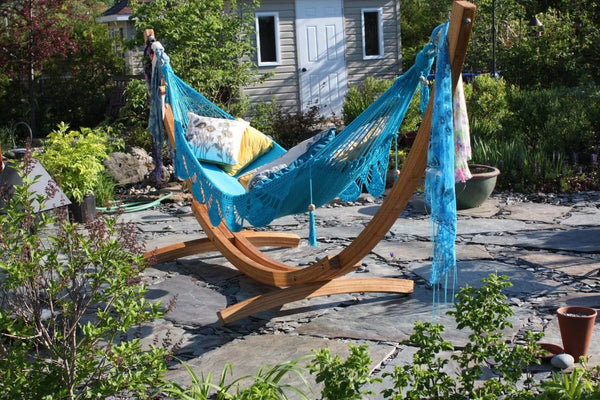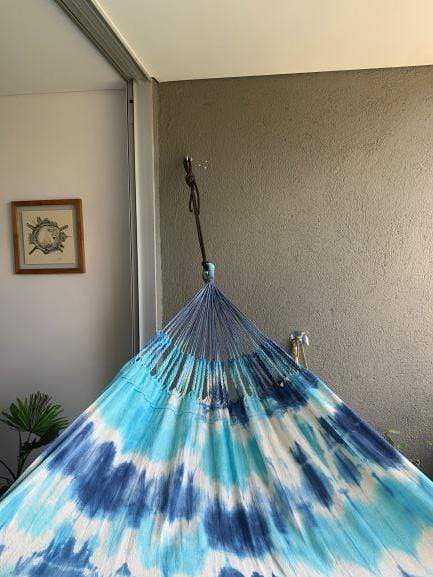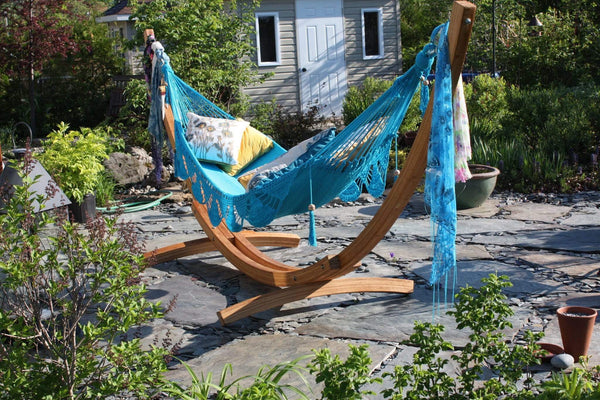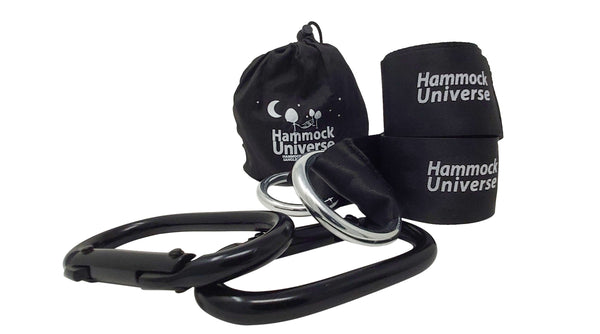FREE SHIPPING on most orders $25+ HAMMOCK BUYING GUIDE
Menu
-
-
Hammocks
-
Hammock Stands
-
Hammocks with Stands
-
Hanging Hammock Chairs
- View all Hammock Chairs
- Brazilian Style Hammock Chairs
- Colombian Hammock Chairs
- Mayan Hammock Chairs
- Mayan Hammock Chairs Deluxe
- Universal Hammock Chair Stand
- U Hammock Chair Stand
- Brazilian Hammock Chair with Universal Chair Stand
- Colombian Hammock Chair with Universal Chair Stand
- Mayan Hammock Chair with Universal Chair Stand
- Mayan Hammock Chair Deluxe with Universal Stand
-
Accessories
- Gift Cards
- Tools and Guides
- Bargain Bin
-
- 1-800-207-4761
- Login

FREE SHIPPING on most orders $25+ HAMMOCK BUYING GUIDE
Sustainable Living – Eco-friendly Home Choices
April 09, 2024 6 min read

Audio Version
With the burst of spring in April comes a refreshing perspective on the spaces we inhabit. It's a time when the melting snow uncovers the green shoots of new life and when Canadians are reminded of their bond with the natural world.
Earth Day arrives with a gentle nudge, pushing us to consider our environmental footprint. It's an auspicious moment to reflect on sustainable living—not just as an abstract idea, but as a concrete set of choices that enhance our environment and personal health.
Amidst this backdrop, eco-friendly home choices become not just a statement of style, but an active step toward a more sustainable lifestyle.
Understanding Sustainable Living
Sustainable living is about making choices that are harmonious with our environment. It's a commitment to reducing our ecological footprint by altering our consumption and lifestyle, all while striving to maintain a balance with the Earth's natural resources.
This lifestyle extends beyond individual habits—it's about creating a global impact through local actions, a ripple effect starting from our very homes. By choosing products that are made mindfully and ethically, we contribute to a healthier planet, ensuring that the world we enjoy today can be enjoyed by future generations.
As Earth Day approaches, it's the ideal time to assess how each aspect of our daily lives, from the energy we use to the products we buy, aligns with the principles of sustainability.
Embracing Eco-friendly Materials
When it comes to giving your home a fresh look or doing a bit of renovating, the materials you choose can make a world of difference—not just for the style but for the planet as well.
Eco-friendly materials are those that have a lower impact on the environment, either through their production, use, or disposal. Think reclaimed wood that gives old timber a new lease on life, bamboo that regrows at an astonishing rate, or recycled metal that shines with a story of transformation.
These materials aren't just kind to the earth; they bring a unique aesthetic and story into your home. A piece of furniture or home accessory made from such materials carries the essence of the earth and can be a talking point for guests. They may cost a little more at times, but the long-term savings and environmental benefits can really add up.
By choosing carefully, you're crafting a home that’s as sustainable as it is beautiful, and every time you walk through the door, you’ll feel the satisfaction of making choices that matter.
The Benefits of Eco-friendly Fabrics in Home Decor
Now, let’s talk fabrics because they drape our windows, cover our furniture, and add softness underfoot. Traditional fabrics often involve a hefty ecological footprint, but there's a host of eco-friendly alternatives that are coming into vogue.
Hemp, linen, and recycled polyester aren't just eco-buzzwords; they're viable options for your drapery, upholstery, and rugs. These materials are produced with less water and chemicals and frequently come from recycling programs that turn plastic bottles and other waste into stunningly good fabric.
But the benefits aren’t just about the earth.
Eco-friendly fabrics are often more durable and can withstand wear and tear while maintaining their luster. Plus, they can be easier to clean and less likely to harbour allergens, making your home safer for you and your family. You’ll breathe easier, literally and figuratively, knowing your choice is supporting a healthier home environment and a greener planet.
Energy-Efficient Home Solutions
As days grow longer and the cold retreats, Canadians can turn their attention to making their homes more energy-efficient in readiness for the warmer months. Energy efficiency is about doing more with less—less power, less cost, and, importantly, less impact on the environment.
You can start with the basics, like switching to LED lighting, which uses a fraction of the energy of traditional bulbs and lasts much longer. They shine just as bright but keep your energy consumption and bills low.
Then there are smart thermostats, which tailor your home's heating and cooling to your schedule, so you’re only using energy when you need it.
Energy-efficient appliances are another smart choice; they can handle the same tasks while using less power.
And don't forget about insulation—properly insulating your home keeps it cooler when it's warm and retains heat when it's cold, further reducing the need for energy-intensive temperature control.
Each step you take leads to a greener home, and when Earth Day rolls around, you'll know you're doing your part for the planet.
Water Conservation Techniques
Water is one of our most precious resources, and conserving it is a critical part of sustainable living.
Inside your home, simple fixes like repairing leaky faucets and choosing low-flow showerheads and toilets can significantly reduce your water usage. Think about the water you use every day and how you can use it more efficiently—like washing full loads of laundry and running the dishwasher only when it's full.
Out in the garden, the choices you make can also have a big impact.
Opt for native plants that are well-adapted to your local climate and require less water. Consider setting up a rain barrel to collect and reuse rainwater for watering your garden. And if you're using irrigation, make it as efficient as possible—drip systems can target water directly to where it’s needed, reducing waste.
With these steps, you're not just conserving water; you're contributing to the well-being of your community and the environment. It’s a ripple effect that starts in your own backyard, and extending far beyond.
Reducing Waste through Mindful Consumption
The mantra "reduce, reuse, recycle" has never been more pertinent than in today's eco-conscious world.
Reducing waste starts with mindful consumption – thinking twice before buying and choosing items that serve multiple purposes or have a longer lifecycle. Every item that finds a permanent home in your spaces should be selected with care, considering both its form and function.
Consider the impact of single-use items and look for ways to replace them with durable alternatives.
Reusable shopping bags, water bottles, and eco-friendly cleaning products are just the beginning.
When it comes to home furnishings, items like hammocks champion versatility and longevity. A hammock can be a cosy reading nook by day and a tranquil spot for stargazing by night, offering sustainable comfort without contributing to a cluttered home.
By adopting a mindset of mindful consumption, you’re not only decluttering your life but also keeping unnecessary waste out of landfills.
Sustainable Choices in Home Renovation
Renovating your home offers a perfect opportunity to weave sustainability into the very fabric of your living space. From the materials you select to the contractors you choose, every decision can reflect your commitment to the environment.
Upcycling old furniture not only gives it a new life but also adds a touch of character and history to your home. Sustainable flooring options like bamboo or cork are not only stylish but also renewable and comfortable underfoot.
For larger projects, consider the use of salvaged materials. Reclaimed wood can add warmth and texture to walls or floors, and recycled glass or metal can give your kitchen or bathroom a modern, eco-friendly flair. Low-VOC or no-VOC paints are a must to ensure the air quality in your home remains pure.
And finally, integrating furnishings that align with these values, such as versatile and sustainable hammocks, can enhance your renovation project. These choices allow you to create a space that’s not only beautiful and functional but also kind to the planet.
Supporting Eco-conscious Brands
Your power as a consumer extends beyond the selections you make for your home—it’s also in the brands you choose to support.
Embracing businesses that uphold sustainable practices does more than just provide you with eco-friendly products; it pushes the market towards a greener future. When you opt for products from companies invested in environmentally conscious manufacturing, you're part of a community that values the health of our planet.
Consider local artisans who use reclaimed materials or companies that invest in renewable energy for production. Their efforts to reduce carbon footprints and waste are making a difference, and your support amplifies that impact.
Behind every eco-conscious brand is a commitment to a better world, and when you align your purchasing power with these values, you help shape the demand for sustainable products. It’s a chain reaction, where each choice you make for an eco-friendlier home reverberates throughout the economy and the environment.
Embracing Earth-Friendly Living: Your Next Steps
As we wrap up our exploration of sustainable living, let's acknowledge the collective power of individual actions. Earth Day might come once a year, but the principles it embodies are for every day. With each eco-friendly choice, from the materials in our renovations to the fabrics that grace our homes, we’re crafting a legacy of sustainability. It's about building a lifestyle that respects and nurtures the environment that sustains us.
Remember, sustainable living is a journey we all share, and the steps you take—big or small—contribute to a larger movement towards a healthier planet. Whether it’s by conserving energy, saving water, opting for durable goods, or supporting eco-conscious brands, every action counts.
So, celebrate Earth Day this year by enriching your space with mindful, green choices. Consider how even a simple addition like a sustainable hammock can affirm your commitment to an environmentally friendly lifestyle, and let your home be a testament to the earth-friendly choices that define your world.
Safety First!
When using a hammock*, safety is paramount. Please make sure to follow these important guidelines when purchasing, installing and using a hammock
*(includes Hammock, Hammock Chair, Hammock Stand and Hammock Accessories)
Safety First!
When using a hammock*, safety is paramount. Please make sure to follow these important guidelines when purchasing, installing and using a hammock
*(includes Hammock, Hammock Chair, Hammock Stand and Hammock Accessories)
Related Products
Want to relax?
Join for exclusive content and promotions we only give to our email list!




